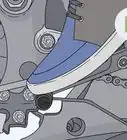This article was co-authored by wikiHow staff writer, Hunter Rising. Hunter Rising is a wikiHow Staff Writer based in Los Angeles. He has more than three years of experience writing for and working with wikiHow. Hunter holds a BFA in Entertainment Design from the University of Wisconsin - Stout and a Minor in English Writing.
There are 17 references cited in this article, which can be found at the bottom of the page.
This article has been viewed 549,548 times.
Learn more...
Motorcycles are fun vehicles that allow you to experience the open road. However, it's critical that you learn to ride in a controlled and safe way. Take a motorcycle safety course and get a permit or license if it is required in your region. Before you start to ride, purchase safety gear and get to know how your bike handles. With a little time and practice, you’ll be ready to cruise around on your bike!
Steps
Getting a License & Registering Your Bike
-
1Sign up for a motorcycle safety course. Look online to find a course near you so you can learn the basics of operating and controlling a motorcycle. These classes typically offer a classroom safety portion and a hands-on riding portion. If you’re uncomfortable with riding a motorcycle, a course is a great place to start.[1]
- Some classes will have motorcycles that you can ride if you do not have one of your own.
- Check for licensing classes if you need a motorcycle license in your area. These classes tend to run a few more days than a non-licensing class, but you’ll receive the proper permit's once you’re finished.
- Motorcycle laws vary depending on where you live. Consult with your local department of motor vehicles to determine the prerequisites for obtaining a license. In the United States, most places require you to be 15 or 16 in order to get a permit. Otherwise, you must be under the supervision of a licensed instructor.
-
2Take the written exam and vision test if required. Schedule a test time that works best for you. The written test will cover basic concepts and rules of the road while the vision test will determine if you can safely drive without a prescription. You need to pass this written exam first before you take the on-cycle test.[2]
- Written and on-cycle exams are required in order to get your license.
- Questions on written exam include safety information, riding techniques, and how to operate your bike. Get familiar with how your motorcycle works and what your area’s laws are for riding a motorcycle. Read through a copy of your location’s motorcycle handbook to familiarize yourself with safety tips, laws, and regulations.[3]
- Go to your department of motor vehicle’s website to find online practice tests for the written exam.
Advertisement -
3Pass the on-cycle exam to get your license. Schedule the test appointment at your department of motor vehicles. The tester will observe you as you ride your motorcycle, making sure you follow the rules of the road. Follow all of the safety precautions you’ve learned prior as you complete the test. Once you pass the exam, you can pay the registration fee for your licensing.[4]
- The on-cycle exam will include identifying where the controls are for your bike, as well as riding slowly in a circle and serpentine pattern. Make sure to practice these techniques on your own before you take the test.[5]
- During the test, be aware of your surroundings and always travel below the speed limit.
- Depending on your location, this can be done at the department of motor vehicles or with a certified third-party tester.
- In the United States, you need to hold an instruction permit for 12 months if you are under 16 in order to get your license.
-
4Register your motorcycle. Visit your local department of motor vehicles in order to register your bike. You will need to have the title for your motorcycle as well as make a required payment. Check online for any other specifics you need while registering your vehicle.[6]
- Registration may differ in your area if you purchased it from a dealership or a private seller. Check your local regulations online.
- Ensure you have updated tags for your license plate, if required in your area.
-
5Get insurance for your bike. In order for you to legally drive in some areas, you need to have insurance. Check with your local regulations to see if you need insurance. If so, talk to your current insurance provider to see if they have an option or bundle for motorcycles.
-
6Check your bike to make sure it is in working condition. Check your tire air pressure with a tire pressure gauge and fill them if they are low. Look at your brake fluid and oil levels to make sure they are filled correctly. Kneel on the ground to visually inspect your brake pads and chains to make sure they aren’t worn down or rusted. If anything looks wrong on your bike, don’t ride it.[7]
- Test turning your lights and turn signals on and off to make sure none of the bulbs are burnt out.
Wearing the Right Gear
-
1Purchase a helmet. Head injuries are the main cause of serious or fatal accidents for cyclists, and helmets can greatly reduce the risk of harm. Find a full-coverage helmet that has a visor that doesn’t limit your vision so you can stay aware of your surroundings. Make sure the chinstrap fit's tightly around your head so the helmet stays secure.[8]
- Look for a Department of Transportation (DOT) or European Commission (ECE) sticker or label to see if the helmet meets the legal requirements for safe riding.
- Do not wear helmets with tinted visors when visibility is low or while riding at night.
- Helmets usually have ventilation systems so your head will stay cool in hot weather.
- Not all locations require you to wear a helmet when you ride. Check with your local laws to find out.
-
2Get a snug jacket made of a sturdy material. Jackets made out of leather or a strong synthetic material will work the best for the most protection. Find jackets with lightweight body armor on your shoulders and elbows so you’re less prone to injury if you get into an accident.[9]
- Find a jacket that has reflectors built into the fabric so you are more visible to other vehicles. If you cannot find a jacket with them sewn in, use reflective tape on the front, back, and on the arms of your jacket.
-
3Wear long pants to protect your legs. In case of a fall, pants will protect the entire lengths of your legs more than shorts. Purchase a thicker material like denim for the best protection while riding your motorcycle.[10]
- Wear leather chaps over your pants for an extra layer of protection.
-
4Pick out boots and gloves. Get boots with short heels so they don’t get caught on any rough surfaces. Make sure the gloves cover all of your fingers and the boots come above your ankle. Find a non-slip material that is durable, such as leather, that makes it easier to hold onto your bike in all weather conditions.[11]
- Tuck the laces inside your boot so they don’t hang or get caught on anything.
- Not only do gloves protect your hands while riding or during an accident, they will also help prevent your skin from drying out.
Learning the Controls on Your Bike
-
1Locate the throttle on the right side grip of your motorcycle. Find the throttle on the right-hand grip of your bike. The throttle controls the speed of the motorcycle. To accelerate and engage the engine, twist the throttle toward you.[12]
- Make sure the throttle snaps back into place if you turn it and let go. If not, have a mechanic take a look at it before you ride.
-
2Find the brakes above the right grip and near your right foot peg. Locate the brake for the front wheel by the handle right above the throttle. You’ll be using the front brake most frequently. While sitting on the bike, find the rear wheel brake with your right foot. Depress the lever to engage the brake.[13]
- Most of your stopping power will come from braking your front tire.
- If you don’t see a lever near your right foot for a rear wheel brake, consult the owner’s manual for your motorcycle to learn where specific controls are found.
-
3Familiarize yourself with the clutch and shifter. Most motorcycles are manual transmissions and need to be shifted up or down as you accelerate and decelerate. Look for the clutch above the left handlebar. It will look similar to the handle that controls your brakes. Find the shifter in front of your left foot and control it with the up and down lever.[14]
- Keep your bike in neutral with your kickstand down when you aren’t using it. Neutral is usually found in between the first and second gear.
- Many motorcycles work with a “1 down, 5 up” shift pattern. From lowest to highest, the gears usually go first, neutral, second, third, fourth, fifth, and sixth.
Practicing Riding Techniques
-
1Get on your bike. Approach your bike from the left side and hold onto the left handlebar for support. Swing your leg over the seat, making sure not to hit your foot on the tail of the bike. Plant both of your feet flat on the ground and get comfortable in your seat. Once you have your feet planted, you can raise the kickstand with the back of your foot.[15]
- Ensure your kickstand is up before you start riding.
-
2Start your engine and let it run for about 1 minute. Turn the key in the ignition so that it’s on and turn the red switch on your right handlebar to the “on” or “run” position. Ensure your bike is in neutral before starting the engine. Hold the clutch in before hitting the start button, which is usually below the red switch and is marked with a lightning bolt. Let the engine turn over so that it is warmed up and properly running when you ride your bike.[16]
- Always look on the gauge indicator on your motorcycle’s dashboard to ensure that it’s in neutral. If not, adjust the gear shift lever while holding the clutch to the neutral position.
- Holding the clutch in while starting your motorcycle prevents it the bike from moving forward if you aren’t in neutral.
- If you have a kick start bike, the starting mechanism is found behind your right foot. Press down on it firmly to turn over the engine.
-
3Keep your headlights on and use turn signals. Locate the controls for your headlights and turn signals, which are typically found on the left handlebar. Use them whenever you ride on populated roads so other drivers can see you.[17]
- If your bike doesn't have turn signals, you'll need to use hand signals. Stick your left hand straight out so it's parallel to the ground, palm facing down, to indicate a left turn. Bend your left elbow so your forearm is at a 90-degree to your bicep (which should be parallel to the ground) and close your fist to indicate a right turn. Begin signaling 100 feet (30 m) before you make the turn and return both hands to the handlebars when executing the turn.[18]
-
4Shift into first gear and slowly ride your bike. Position your left foot so your heel is on the peg and your toes are near the lever. Hold the clutch down and shift to first gear by pushing the shifter down with your left foot. Your bike will start to move on it's own without activating the throttle as you slowly release the clutch. Practice keeping your balance as it moves forward at a slow speed. Keep your hand on the brake in case you start losing control.[19]
- Practice on an isolated section of road or in a parking lot that has little traffic so you don’t have to worry about other motorists.
- If you let go of the clutch too fast, you may kill the engine. If this happens, shift back into neutral and start your engine again.
- Practice “power walking” by walking it forward while slowly releasing the clutch to accelerate. Work your way up until you’re comfortable keeping your feet on the pegs while your bike is moving.
-
5Squeeze your clutch and shift gears with your left foot. When you feel comfortable going faster, turn the throttle slightly towards your body as you release the clutch to accelerate. Once you go over 5 mph (8.0 km/h), ease off of the throttle, squeeze your clutch in, and pull your shifter up past neutral into second gear. Once you’ve shifted your motorcycle, let go of the clutch and accelerate again.[20]
- As you increase your speed, you need to shift into higher gears. As you decrease speed, downshift to a lower gear. Make sure to let off of your throttle when you squeeze your clutch as you shift.
- Once you switch into second gear, you don’t have to shift down to first gear until you come to a complete stop.
-
6Make turns by pushing the handlebar on the opposite side forward. Look in the direction you’re turning rather than looking straight forward. Slow down as you approach your turn by releasing the throttle. To make a left turn, pull the left handlebar closer to you and push the right handlebar forward. For a right turn, pull the right handlebar close to you and push the left one forward.[21]
- For faster turns, practice countersteering. As you make your turn, lean slightly in the direction you wish to go while pushing the handlebar away from you to stay balanced.
- If you make too sharp of a turn, it will cause you to crash.
-
7Practice slowing to a stop. As you release the throttle, slowly pull on the clutch and squeeze the front brake to slow down. Rest your foot on the rear brake and press down slightly to slow down. Once you come to stop, plant your left foot on the ground and keep your right foot on the rear brake.[22]
- If you are finished riding, shift your bike into neutral once you come to a stop.
- Don’t squeeze hard on the front brake or else you could cause your tires to lock up and cause skidding or an accident.
-
8Move on to more populated roads. Once you feel more comfortable with the basics of riding and controlling your bike, work onto roads with slight amounts of traffic. Keep your surroundings in mind as you ride your bike and be aware of other drivers.
Community Q&A
Did you know you can get answers researched by wikiHow Staff?
Unlock staff-researched answers by supporting wikiHow
-
QuestionWhat do I do while turning the motorcycle in narrow street?
 wikiHow Staff EditorThis answer was written by one of our trained team of researchers who validated it for accuracy and comprehensiveness.
wikiHow Staff EditorThis answer was written by one of our trained team of researchers who validated it for accuracy and comprehensiveness.
Staff Answer wikiHow Staff EditorStaff Answer
wikiHow Staff EditorStaff Answer -
QuestionHow do I overcome my fear of motorcycles?
 Community AnswerTry riding it in your driveway, or somewhere safe. Wear lots of protection, such as knee pads, arm pads, and a helmet.
Community AnswerTry riding it in your driveway, or somewhere safe. Wear lots of protection, such as knee pads, arm pads, and a helmet. -
QuestionHow do I handle a motorcycle on a stop and go situation?
 Community AnswerHold your clutch and brake, but make sure your engine does not stop by moving the throttle.
Community AnswerHold your clutch and brake, but make sure your engine does not stop by moving the throttle.
Warnings
- Practice under the supervision of an experienced rider to stay safe.⧼thumbs_response⧽
- Avoid potholes, gravel, and hazardous road conditions. While cars can usually handle these easily, they are extremely dangerous for cyclists.⧼thumbs_response⧽
- Always stay aware of where other drivers are on the road.⧼thumbs_response⧽
- Wear all of the safety gear, including a helmet, jacket, long pants, gloves, and boots, to protect yourself in case you fall off your bike. Helmets are mandatory in most states.⧼thumbs_response⧽
- Heavy vehicles including trucks and buses need to make wide turns. Please give them enough space to maneuver and do not try to pass them until they complete their turn. Avoid being in their blind spot for too long, they may need to merge in your lane but may not see you.⧼thumbs_response⧽
- It is not recommended you allow a young child (below 4 feet or under the age of 8) to ride. Some states have a minimum age requirement for the passenger. If you will allow a young child to ride, it is recommended they wear a safety strap and a helmet. Tell them to hold onto you at all times.⧼thumbs_response⧽
- Avoid lane-splitting. It is illegal in most states and dangerous (not all drivers use their mirrors or turn signals when changing lanes). Lane splitting is when a cyclist maneuvers between rows of cars.⧼thumbs_response⧽
- Unlike automobiles, motorcycles do not have seatbelts or airbags, increasing your likelihood of severe injury or death in a collision. You should drive professionally, and treat a motorcycle as if you were driving a car.⧼thumbs_response⧽
- Do not cause road rages with automobile drivers, for example smashing mirrors or windows after an argument because you are asking for trouble (the driver may get revenge on you) and you will be in a lot of trouble with law enforcement.⧼thumbs_response⧽
- Do not drink and drive or drive under the influence. Never allow an intoxicated passenger to ride.⧼thumbs_response⧽
References
- ↑ http://www.pamsp.com/courses-LEARN.php
- ↑ https://www.dmv.org/co-colorado/motorcycle-license.php
- ↑ https://www.dmv.ca.gov/portal/dmv/?1dmy&urile=wcm:path:/dmv_content_en/dmv/pubs/interactive/tdrive/clm1written
- ↑ https://www.dmv.org/co-colorado/motorcycle-license.php
- ↑ https://www.dmv.ca.gov/portal/dmv/detail/video/2wheels_mc/motorcycle_skills_test
- ↑ https://www.dmv.org/motorcycle-registration.php
- ↑ https://youtu.be/IG-qJws9_SM?t=33s
- ↑ https://www.dmv.ca.gov/portal/dmv/?1dmy&urile=wcm:path:/dmv_content_en/dmv/pubs/dl655/mcycle_htm/preparing
- ↑ https://www.dmv.ca.gov/portal/dmv/?1dmy&urile=wcm:path:/dmv_content_en/dmv/pubs/dl655/mcycle_htm/preparing
- ↑ https://www.dmv.ca.gov/portal/dmv/?1dmy&urile=wcm:path:/dmv_content_en/dmv/pubs/dl655/mcycle_htm/preparing
- ↑ https://www.dmv.ca.gov/portal/dmv/?1dmy&urile=wcm:path:/dmv_content_en/dmv/pubs/dl655/mcycle_htm/preparing
- ↑ https://youtu.be/kTQ02P4R3TM?t=4m11s
- ↑ https://youtu.be/kTQ02P4R3TM?t=4m19s
- ↑ https://www.dmv.org/how-to-guides/riding-motorcycle.php
- ↑ https://youtu.be/kTQ02P4R3TM?t=5m15s
- ↑ https://youtu.be/kTQ02P4R3TM?t=5m57s
- ↑ https://www.dmv.org/how-to-guides/riding-motorcycle.php
- ↑ https://www.dmv.org/how-to-guides/hand-signals-guide.php
- ↑ https://youtu.be/kTQ02P4R3TM?t=7m6s
- ↑ https://youtu.be/kTQ02P4R3TM?t=9m51s
- ↑ https://youtu.be/kTQ02P4R3TM?t=13m26s
- ↑ https://youtu.be/kTQ02P4R3TM?t=16m33s
About This Article
If you want to ride a motorcycle, make sure you have any required licenses and safety gear, especially a durable helmet. Lift the kickstand with the back of your foot and start the engine. To accelerate the bike, turn the throttle on the right-hand grip of the bike toward you, and use the handlebars to steer the bike left and right. As you accelerate, use the left foot shifter and the clutch lever on the left handlebar to shift gears. When you’re ready to stop, gradually squeeze the brake above the throttle on the right grip or depress the rear right wheel brake with your right foot. Read on for tips on steering and shifting the bike as you ride!
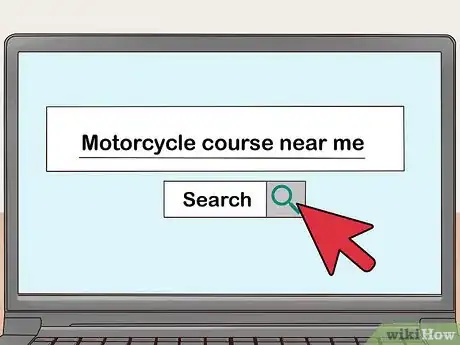
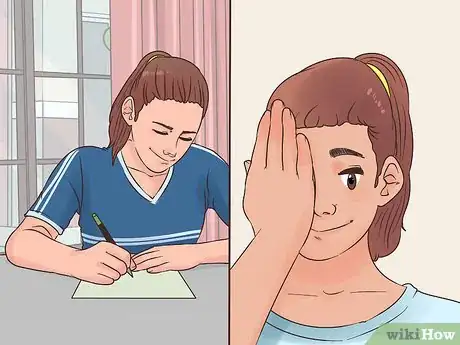
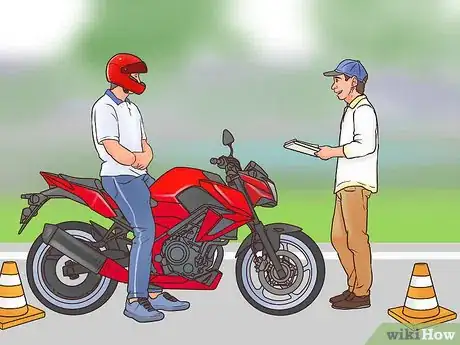
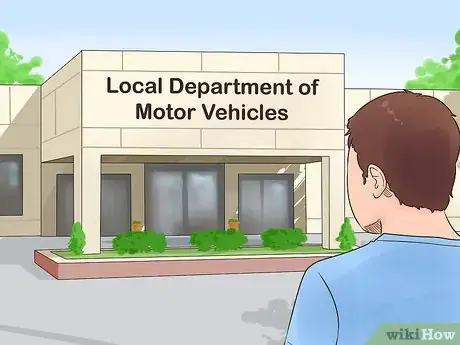
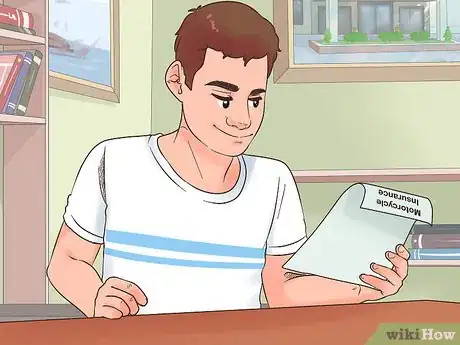

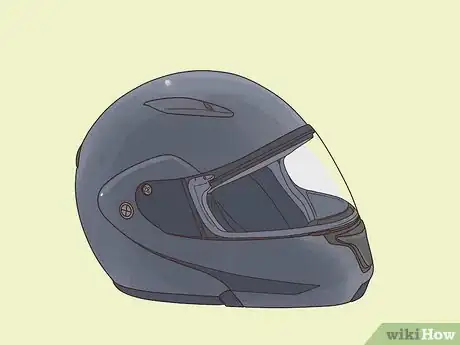
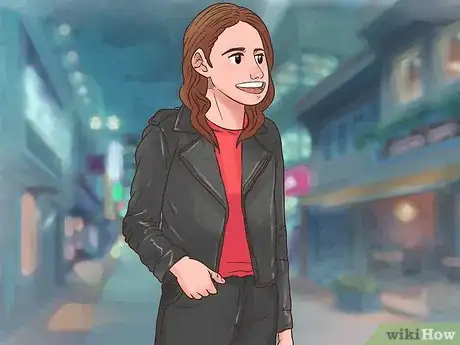
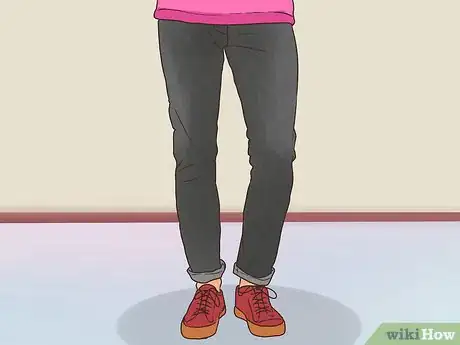

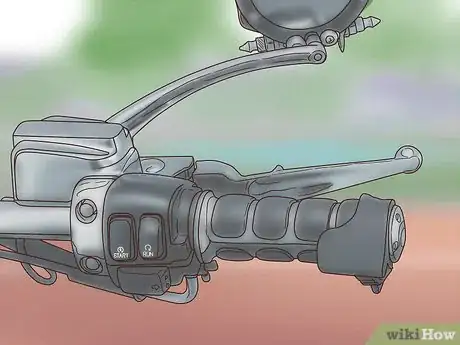
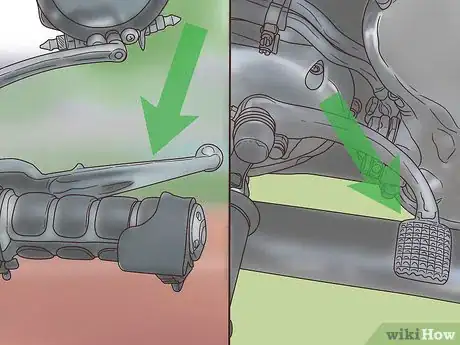
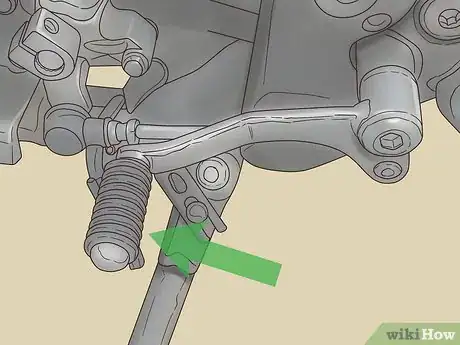
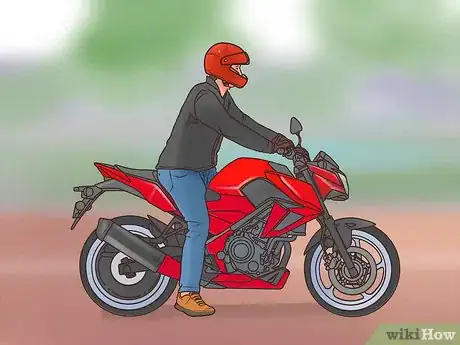
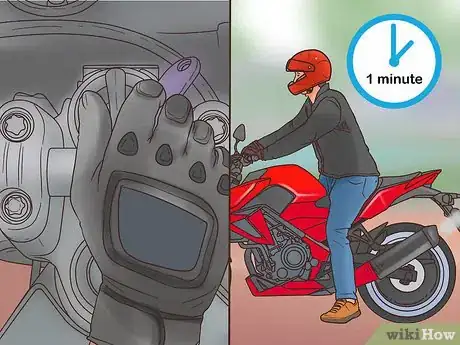
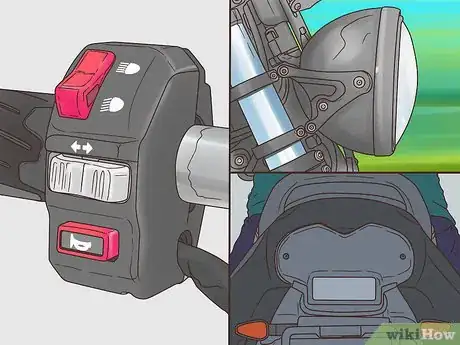
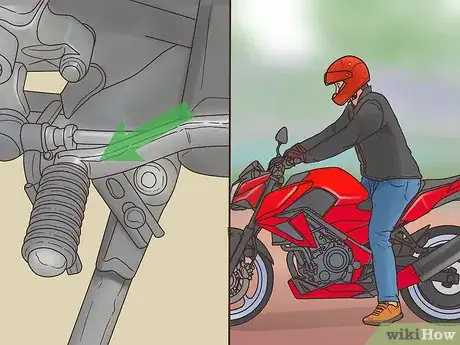
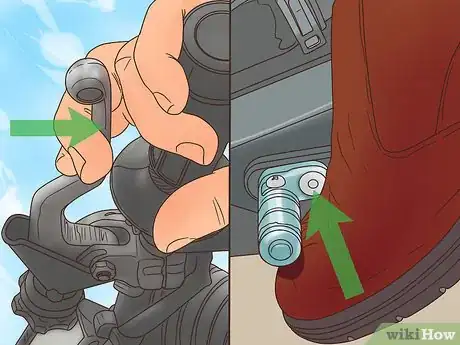
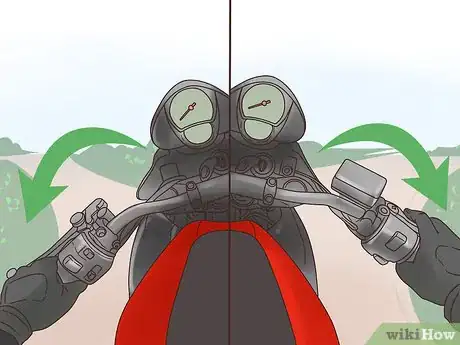

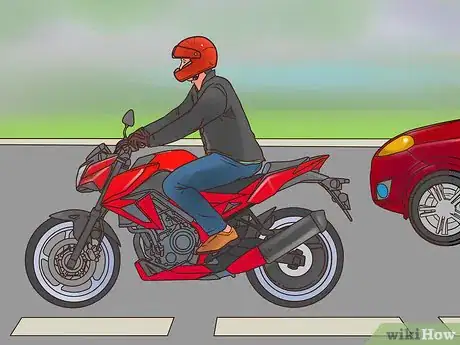
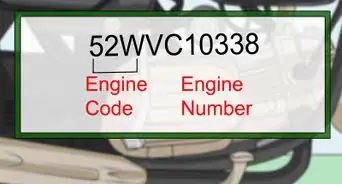
-Step-13.webp)
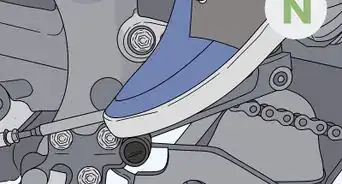
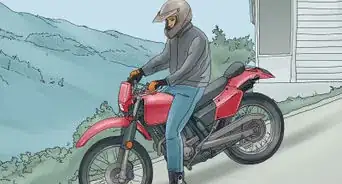

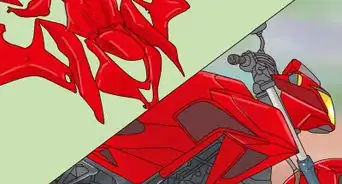
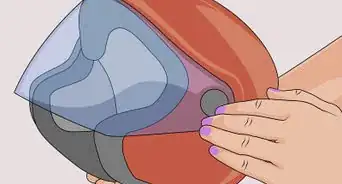
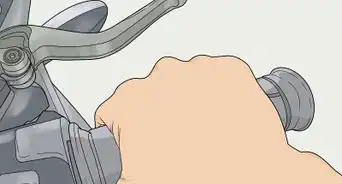
-Step-17.webp)
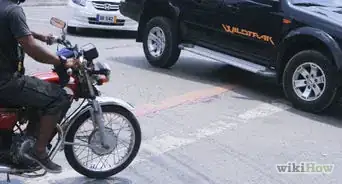










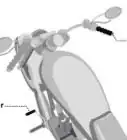
-Step-13.webp)
